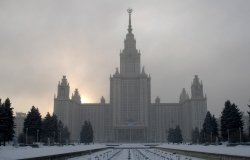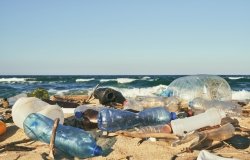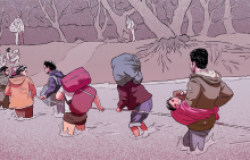How Does the Media – and Public – Learn Environmental Science? Help Us Find Out
If people do not know scientists or understand how they work, it follows that they are unlikely to make informed choices on public policy issues or support basic scientific research to address vital issues like climate change and conservation, writes Wilson Center Scholar Louise Lief.
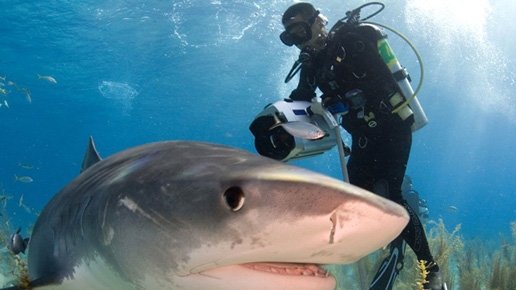
Years ago, when I was a diplomatic correspondent at a large national magazine, if I encountered what I thought of as “science stuff,” I sent it to the science desk. I was busy covering foreign policy, wars, and ethnic and religious conflicts – not science. It was only when I took a new job focused on educating the U.S. media on a wide range of international issues that I began to discover the rich world I had overlooked, and see new links and connections.
I was lucky, because I had the opportunity to explore. Today, that scene still plays out at countless media organizations, with a new wrinkle. Often, there is no science or environmental desk. Economic turmoil in the industry has caused repeated newsroom budget cuts and a dwindling number of science and environmental reporters.
Declining Reporting – and Interest
As a result of these changes, with a few exceptions, there is almost no coverage of science and the environment in the general media, where much of the public still gets its news. A Pew Research Center content analysis of a broad sampling of media outlets revealed that from 2007 to 2010, environmental topics accounted for only 1.5 percent of all news stories, with the same percentage for all science and technology news. That number dropped to one percent in both categories in 2011.
Why so little engagement? Many social scientists see broader societal trends at work. According to the National Science Board, the majority of Americans do not understand what scientists do. In a March 2011 Research!America survey, two-thirds of those polled could not name a single living scientist. A new article in Bioscience cites a decline in the public’s engagement with the natural world. The list goes on.
This worrisome state of affairs has undoubtedly contributed to the wide gap between what most scientists think and what a majority of the public believes. According to a 2009 Pew Research Center poll, while 87 percent of scientists accepted that natural selection plays a role in evolution, only 32 percent of the public agreed – one of the lowest percentages in the developed world. In April 2013, the Yale Project on Climate Change Communication found that while 97 percent of scientists think climate change is caused by human activities, only 41 percent of the public concur.
If people do not know scientists or understand how they work, it follows that they are unlikely to make informed choices on public policy issues or support basic scientific research to address vital issues like climate change and conservation.
Forging a Better Relationship
The Wilson Center has given me an opportunity as a public policy scholar to examine the relationship between the scientific community and the general media and try to start a conversation between these two largely unengaged communities and cultures. I am experimenting with innovative ways to make environmental science accessible and useful to all journalists in all media, consistent with the best journalistic practices.
This initiative is not meant to replace the excellent and much needed reporting by dedicated science and environmental reporters and specialized media outlets, but rather to supplement and support their efforts. My intention is to widen the circle and involve more of the general media in this subject matter. The problems are big, and everyone needs a seat at the table.
The first step is to identify barriers that have discouraged the general media from including a scientific dimension in their reporting.
If you reside in the rich world of science, it’s hard to imagine why anyone wouldn’t just access the abundant information available online. Seen from the outside though, science can appear to be a distant and impenetrable world, reserved for specialists who understand the jargon and the math. Like members of the public, many journalists in the general media don’t know scientists and tend to steer clear. Reaching out for quotes during crises like the Deepwater Horizon oil spill while on deadline is not an ideal way to establish the long-term relationships essential to progress in this area.
But scientists can do more to facilitate access to experiences that will enable the media – and through them, the public – to better understand these issues. Kathleen Hall Jamieson, director of the Annenberg Public Policy Center at the University of Pennsylvania, describes this role as “honest brokers of the truth.” This requires willingness by members of the scientific community to make the time to communicate clearly and often with non-scientists in accessible language.
In the Media? Tell Us What You Think
In a recent interview at the Wilson Center, Pace University Fellow Andrew Revkin, author of The New York Times’ Dot Earth blog, expressed his view that science communicators need to adopt a new approach. People need to make up their own minds about how they feel about many of the pressing environmental issues confronting us, he said. That is even more of an imperative for journalists, who are naturally suspicious of being used to advance someone’s agenda.
Andrew Revkin: To save the environment, move beyond finger pointing
One approach I am exploring is combining professional development opportunities – scarce at most news organizations these days – with environmental science content. Scientists and journalists can get to know each other, and the latter can improve their craft skills. I am also investigating how emerging technologies and citizen science can help news organizations attract and retain new audiences, and possibilities for broadcast programming that embed science in non-traditional formats for new audiences.
To journalists who think environmental science is boring and difficult, let me assure you: it can be interesting and fun. The huge reservoir of untapped stories in the natural world will enrich the work you already do, please your editors, interest your public, and open doors to new experiences.
What’s the next step? If you are a journalist who is curious about the natural world, even if – especially if – you have no science background, please fill out this professional development survey. Tell us what interests you and what craft skills you’d like to learn and improve. We are working with several scientific institutions to create engaging professional development opportunities – to take place after work or on the weekends – for journalists, but we want your input first.
Louise Lief is a public policy scholar at the Wilson Center, affiliated with ECSP and the Science and Technology Innovation Program.
Sources: BioScience, National Science Foundation, Pew Research Journalism Project, Research!America, Yale Project on Climate Change Communication.
Photo Credit: "Tiger shark with diver," courtesy of flickr user Willy Volk. Video: Interview with Andrew Revkin courtesy of Sean Peoples/Wilson Center; Interview with Neil deGrasse Tyson, courtesy of 'The Colbert Report.'
About the Author
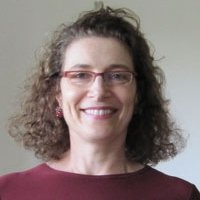

Environmental Change and Security Program
The Environmental Change and Security Program (ECSP) explores the connections between environmental change, health, and population dynamics and their links to conflict, human insecurity, and foreign policy. Read more

Science and Technology Innovation Program
The Science and Technology Innovation Program (STIP) serves as the bridge between technologists, policymakers, industry, and global stakeholders. Read more
